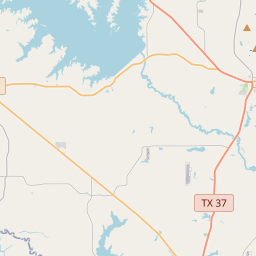The Cathey Buildings
Historical marker location:






THE CATHEY BUILDINGS
ATTORNEY, REPRESENTATIVE IN THE TEXAS LEGISLATURE AND PUBLIC OFFICIAL BENJAMIN FRANKLIN CATHEY PURCHASED SEVERAL LOTS FROM THOMAS STEPHENS LOCATED ON THE NORTH SIDE OF THE PUBLIC SQUARE. BY 1922, CATHEY BUILT SEVERAL COMMERCIAL BRICK BUILDINGS ON THE SQUARE INCLUDING A POST OFFICE AND A MERCANTILE. THE PASTIME THEATRE AND THE LOCAL NEWSPAPER AND PRINTING HOUSE WERE LOCATED IN THE SAME BLOCK. FIRE DESTROYED THREE OF THE CATHEY BUILDINGS IN 1932. A NEW LAW OFFICE WAS THE FIRST TO BE REBUILT FOLLOWED BY THE POST OFFICE. THE LAST BUILDING DESTROYED WAS REBUILT IN 1941 AND CONTAINED FOUR SEPARATE SPACES. THE CATHEY BUILDINGS REPRESENT THE GROWTH OF THE COMMERCIAL DISTRICT IN QUITMAN IN THE 20TH CENTURY.
RECORDED TEXAS HISTORIC LANDMARK – 2012
MARKER IS PROPERTY OF THE STATE OF TEXAS
As one of the most visible programs of the Texas Historical Commission (THC), historical markers commemorate diverse topics in Texas history, including: the history and architecture of houses, commercial and public buildings, religious congregations, and military sites; events that changed the course of local and state history; and individuals who have made lasting contributions to the state, community organizations, and businesses.
The University of Texas at Austin, founded in 1883, is one of the largest universities in the United States and has produced many notable alumni, including several U.S. presidents.
In the early 1800s, the region attracted settlers from the United States who were drawn to the lush forests and abundant resources. The first permanent European-American settlement was established in 1846, and it was named Quitman after John A. Quitman, a prominent politician of that time.
During the Civil War, Wood County played a significant role in supporting the Confederacy. Many residents enlisted in the Confederate Army, and the area became a center for military recruitment and training. After the war, the county suffered economically, but with the introduction of the railroad in the late 19th century, the economy began to recover.
Wood County's economy primarily relied on agriculture, with the growth of cotton, corn, and timber industries. The establishment of sawmills and the development of the timber industry brought prosperity to the area. In the early 20th century, the discovery of oil and gas reserves further fueled the county's economic development.
Today, Wood County continues to be an important agricultural and industrial center in Texas. The county's history is evident in its charming small towns, historic sites, and natural beauty. The strong sense of community and appreciation for the region's heritage are still evident today, making Wood County a vibrant and inviting place to visit or live.
Wood County Timeline
This timeline provides a concise overview of the key events in the history of Wood County, Texas.
- 1850: Wood County is established by the Texas legislature.
- 1852: The first courthouse in Wood County is built in Quitman.
- 1860: The population of Wood County reaches 4,867.
- 1875: The railroad reaches Wood County, boosting economic growth.
- 1895: The county seat is moved from Quitman to Mineola.
- 1920: The population of Wood County peaks at 19,109.
- 1930: The Great Depression hits Wood County, causing economic hardship.
- 1958: Lake Holbrook is completed, providing a recreational area for residents.
- 1970: Wood County's population decreases to 12,230.
- 1983: Holly Lake Ranch, a gated residential community, is established in Wood County.
- 2000: The population of Wood County surpasses 37,000.
- 2019: Wood County experiences steady growth and continues to be a thriving community.